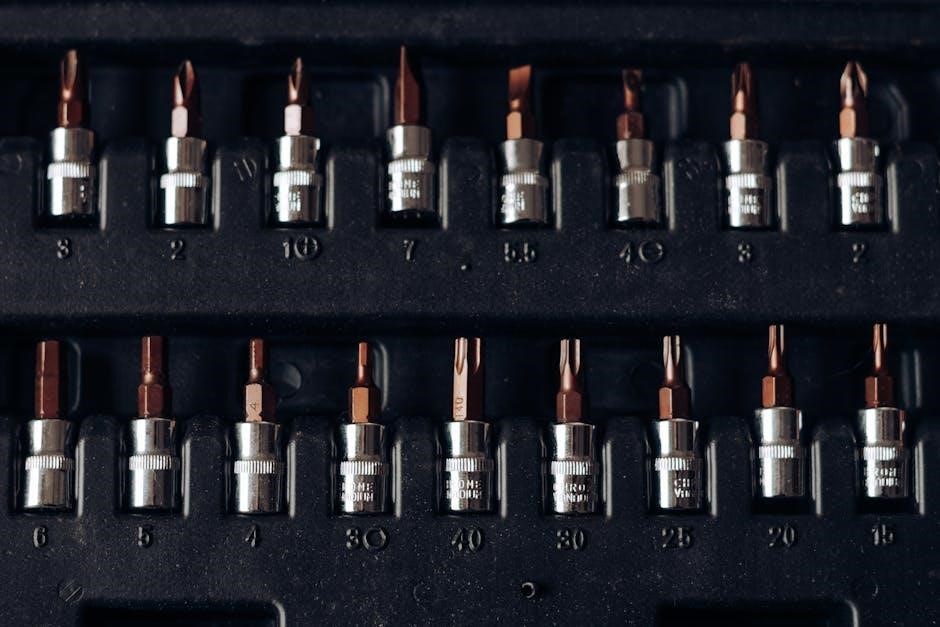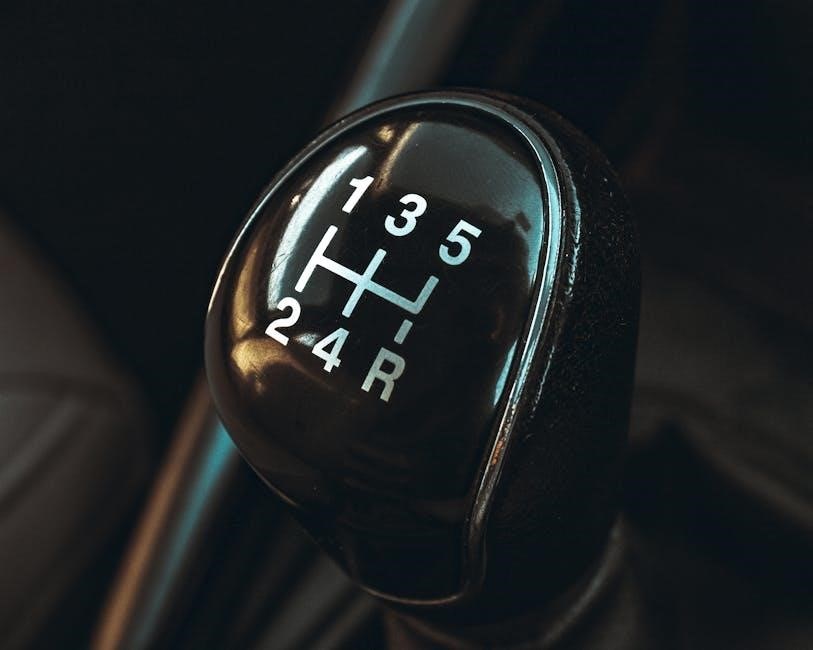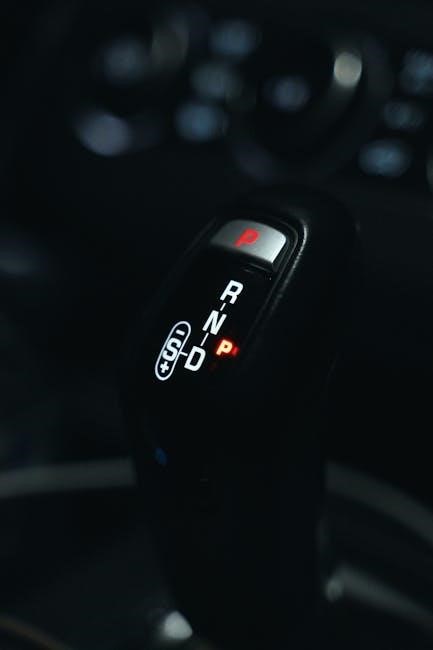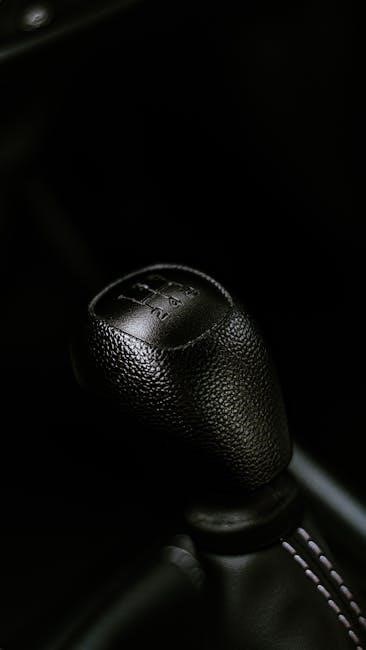Autostart technology enables vehicles to start remotely, offering convenience and comfort. For manual transmissions, it requires specialized solutions to ensure safe operation without driver input.
1.1 What is Autostart?
Autostart, or remote start, allows a vehicle to be started without physical interaction, enhancing convenience and comfort. For manual transmissions, it requires the car to be in neutral gear and often involves mechanisms like clutch override switches to ensure safe starting. While traditionally rare for manuals due to operational challenges, advancements now enable compatible systems. Some aftermarket brands, such as Compustar, offer solutions tailored for manual vehicles, addressing concerns like unintended movement. These systems ensure the car remains stationary during startup, preventing potential damage or hazards. Autostart technology for manuals is less common but increasingly available, providing drivers with the same remote-start benefits enjoyed by automatic transmission owners.

1.2 Benefits of Autostart for Manual Transmissions
Autostart technology offers significant convenience for manual transmission vehicles, allowing drivers to start their cars remotely. This feature is particularly beneficial in extreme weather, enabling preheating or cooling of the cabin. It also saves time, as the vehicle is ready to drive upon entry. For manual transmissions, autostart systems ensure the car remains in neutral, preventing unintended movement. Additionally, it enhances security by reducing the need to leave the vehicle unattended while warming up. While less common than in automatics, autostart for manuals provides seamless integration, offering the same benefits without compromising safety or functionality. It is especially advantageous in cold climates or busy schedules, making it a valuable addition for drivers seeking modern convenience.

Challenges of Autostart in Manual Cars
Autostart in manual cars faces challenges like neutral gear detection and clutch override mechanisms, ensuring safety and preventing unintended movement during remote start.
2.1 Neutral Gear Detection
Neutral gear detection is crucial for autostart in manual cars. The system must confirm the vehicle is in neutral to prevent accidental movement. Sensors monitor the transmission state, ensuring safety and reliability. If the gear isn’t neutral, the system aborts startup. This feature is vital to avoid damage or unintended motion, making it a cornerstone of autostart technology for manual transmissions. Proper detection ensures smooth operation and driver confidence. Modern systems integrate advanced sensors for accurate readings, minimizing risks associated with remote starting. This technology addresses the unique challenges of manual cars, providing a seamless experience.
2.2 Clutch Override Mechanisms
Clutch override mechanisms are essential for autostart in manual cars, as they bypass the need for manual clutch engagement. These systems ensure the engine can start without pressing the clutch pedal. They typically involve a relay or sensor that tricks the car into thinking the clutch is pressed, allowing the starter motor to engage. This prevents the vehicle from lurching forward when starting remotely. However, improper installation can lead to safety risks or damage to the transmission. Modern solutions often include fail-safes to prevent accidental starts. While some vehicles have factory-installed overrides, aftermarket systems require careful configuration. The mechanism must synchronize with the car’s electronics to maintain reliability and safety, making it a critical component for autostart functionality in manual transmissions.

Solutions and Modifications

Bypass modules and relay installations are common solutions for enabling autostart in manual cars, ensuring safe and reliable remote starting without manual clutch engagement required for ignition.
3.1 Bypass Modules for Manual Transmissions
Bypass modules are specialized devices designed to enable remote starting in manual transmission vehicles. They work by simulating the clutch pedal press, allowing the engine to start without physical engagement. These modules ensure the vehicle remains in neutral during remote start, preventing accidental movement. Installers often pair them with neutral gear detection systems for added safety. Bypass modules are particularly popular among DIY enthusiasts and professionals alike, as they offer a reliable solution for vehicles without factory-installed autostart features. While installation requires careful wiring and configuration, they provide a cost-effective alternative to aftermarket kits. However, improper installation can lead to safety risks, emphasizing the need for precise setup and testing.
3.2 Relay Installations for Remote Start

Relay installations are a common solution for enabling remote start in manual transmission vehicles; These relays act as intermediaries, connecting specific wires to simulate the clutch pedal press during remote activation. By integrating with the vehicle’s electrical system, relays ensure the engine starts only when the transmission is in neutral, preventing unintended movement. The installation typically involves wiring the relay to the clutch and ignition systems, allowing the remote start module to control the starting process. While effective, relay setups require precise configuration to avoid safety risks, such as accidental engagement of the transmission. Proper installation ensures smooth operation and enhances the convenience of remote starting for manual vehicles.

Manufacturers Supporting Autostart
Brands like Compustar specialize in remote start systems for manual transmissions, offering innovative solutions that ensure safe and reliable operation, catering to drivers seeking convenience and efficiency.
4.1 Factory-Installed Autostart Systems
Some manufacturers now offer factory-installed autostart systems for manual transmissions, addressing safety concerns like neutral gear detection and clutch override mechanisms. These systems ensure smooth starts without driver input, enhancing convenience while maintaining control. They integrate seamlessly with the vehicle’s electronics, providing features like push-button starts and remote activation. By incorporating advanced sensors and fail-safes, factory systems minimize risks associated with remote starting in manual cars. This innovation reflects the growing demand for modern, user-friendly solutions in traditional manual vehicles, blending functionality with safety to meet driver expectations. As technology evolves, more manufacturers are expected to adopt such systems, setting new standards in automotive convenience and performance.

4.2 Aftermarket Brands Offering Autostart Solutions
Several aftermarket brands, such as Compustar and 12 Volt Solutions, specialize in autostart systems for manual transmissions. These brands provide innovative solutions, including plug-and-play kits and bypass modules, designed to overcome the unique challenges of remote starting in manual vehicles. Their systems often feature advanced neutral gear detection and clutch override mechanisms, ensuring safe and reliable operation. These aftermarket options cater to enthusiasts and drivers who want the convenience of autostart without compromising the driving experience of a manual transmission. With a focus on compatibility and ease of installation, these brands have become popular choices for those seeking to retrofit their vehicles with modern autostart technology.

Installation Considerations
Proper installation of autostart systems for manual transmissions requires careful consideration of safety, legal compliance, and technical expertise to ensure reliable and secure operation.
5.1 Safety Precautions
Installing an autostart system in a manual transmission vehicle requires strict adherence to safety guidelines to prevent accidental starts or mechanical damage. Ensure the vehicle is in neutral gear and the clutch pedal is disengaged before remote starting. A clutch override mechanism or neutral gear detection system must be integrated to prevent the car from moving unexpectedly. Proper electrical connections are critical to avoid short circuits or fire hazards. Always use high-quality components and follow manufacturer instructions. Testing the system in a controlled environment is essential to ensure functionality and safety. Consider consulting a professional installer to minimize risks and guarantee compliance with safety standards.
5.2 Legal and Insurance Implications
Installing an autostart system in a manual transmission vehicle may have legal and insurance implications. Check local laws, as some jurisdictions regulate remote start systems for safety reasons. Insurance companies may require proof of professional installation or specific certifications to maintain coverage. Additionally, modifications to factory systems could void warranties or affect insurance premiums. Liability concerns arise if unauthorized individuals gain access to the remote start, potentially leading to theft or accidents. Ensure compliance with all regulations and consult your insurance provider before installation. Proper documentation and adherence to safety standards can help mitigate risks and maintain legal compliance.
5.3 DIY vs Professional Installation
When considering autostart installation for a manual transmission vehicle, the decision between DIY and professional installation is crucial. DIY kits are cost-effective and can be installed with basic tools, but they require technical knowledge and precise wiring skills. Incorrect installation may lead to system malfunctions or even damage to the vehicle’s electrical system. Professional installation, while more expensive, ensures proper setup and reliability, often with warranties. Experts handle complex components like clutch override mechanisms and neutral gear detection, minimizing risks. DIY enthusiasts should weigh their expertise against potential risks, while others may prefer the assurance of professional work. Choose the option that best aligns with your skills and confidence level.
Autostart technology for manual transmissions offers unparalleled convenience and comfort, especially in extreme weather conditions. While traditional systems are designed for automatic vehicles, advancements in aftermarket solutions have made remote starting feasible for manuals. Key considerations include proper installation, safety mechanisms, and legal compliance. DIY installations are possible but demand technical expertise, whereas professional setups ensure reliability and warranty coverage. Despite initial challenges like neutral gear detection and clutch override, modern solutions effectively address these issues. As technology evolves, autostart systems for manual transmissions continue to gain traction, providing drivers with enhanced functionality and ease of use. With careful planning and execution, autostart can be a valuable addition to any manual vehicle, offering benefits without compromising safety or performance.



